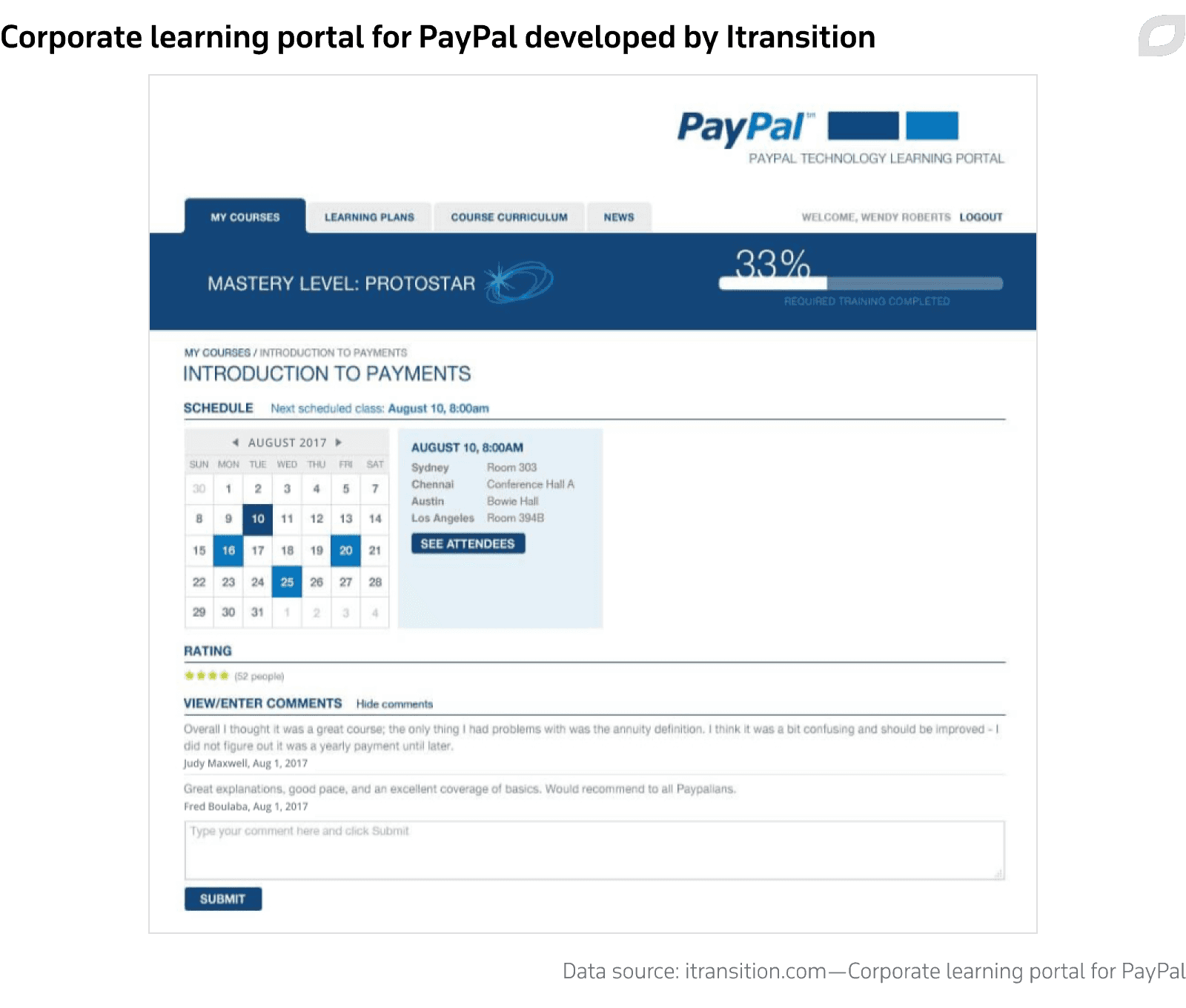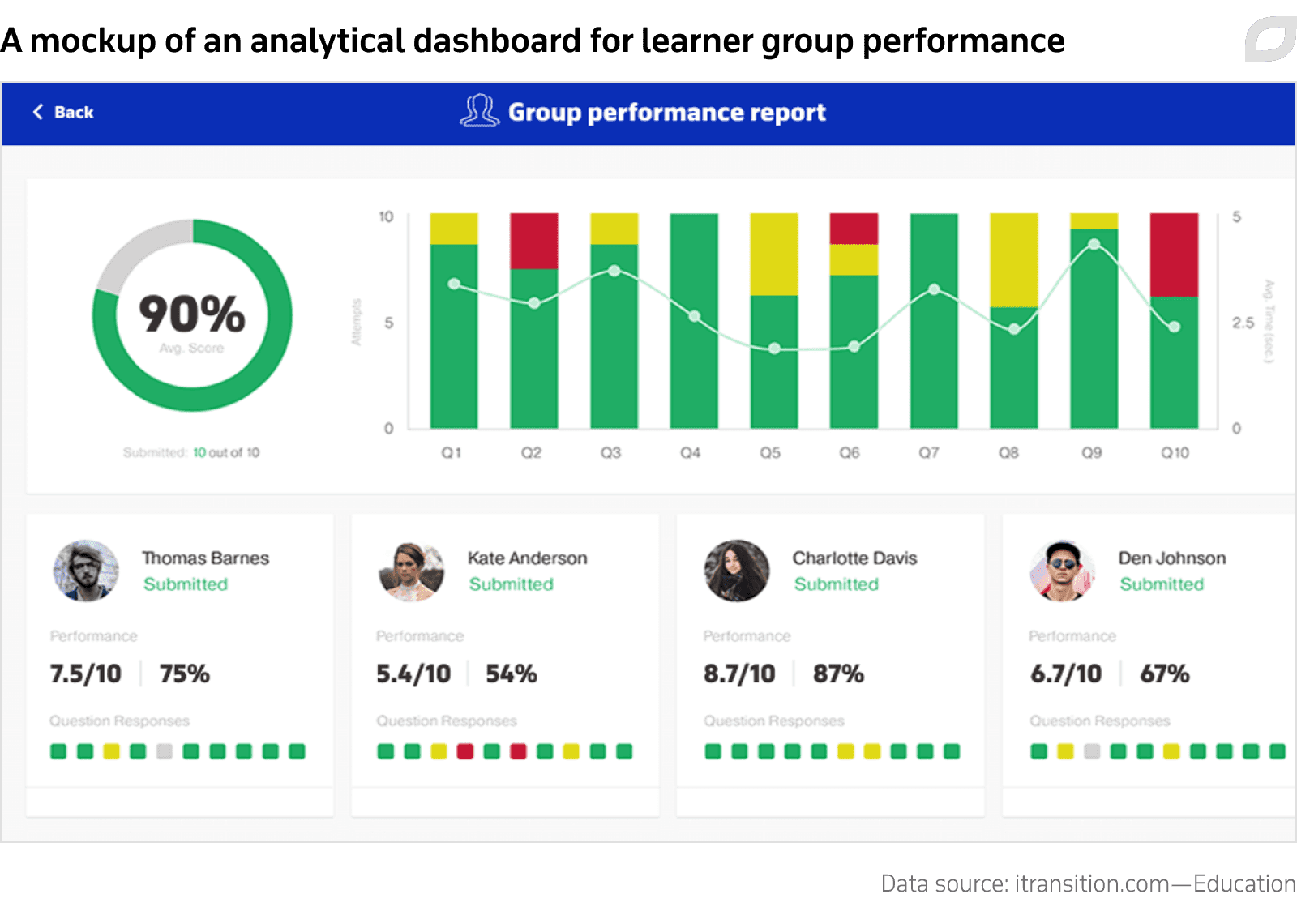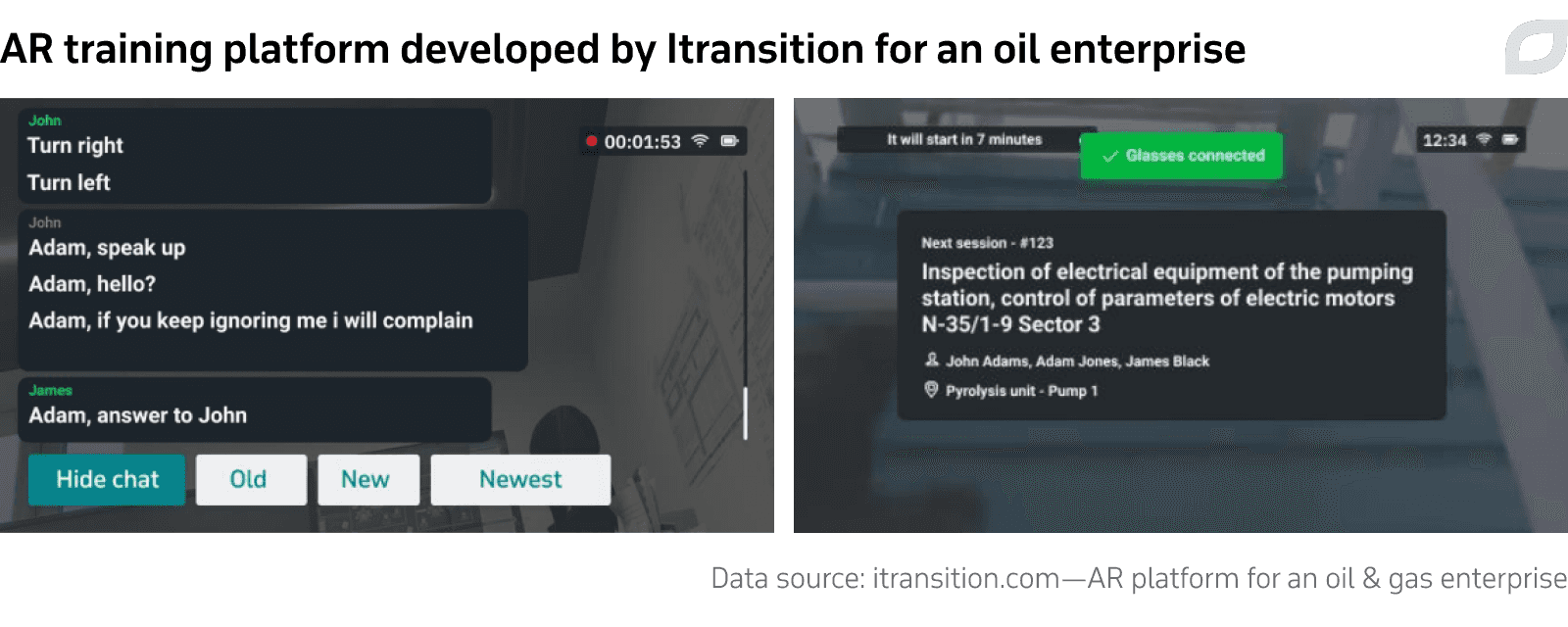In the majestic Florence of the late Middle Ages and Renaissance, the artisan workshops called "botteghe" served as a meeting point between masters and young talents, providing the latter with a valuable opportunity to develop the most advanced technical skills over a long and challenging apprenticeship.
This model of professional development certainly involved innovative elements in terms of a knowledge management strategy and collaboration among peers (we might even identify common ground between these realities and modern coworking). Not to mention that nowadays, few corporate trainers could boast of having educated at the same time talents such as Leonardo da Vinci and Botticelli, as Andrea del Verrocchio did in his Florentine workshop.
But times, forgive the cliché, have radically changed, and our way of managing professional education has been constantly adapted to ever-evolving social conditions and technologies. In light of this, let's frame the current state of corporate training and find out why eLearning may be the most suitable solution to prepare workers for the latest challenges of the modern job market.
From traditional training to corporate eLearning
In an era where mass digitization has ended up reshaping both the educational domain and our work environments, even that middle ground known as professional development was set to undergo an equally significant shift. Indeed, the rise of remote and alternative workforce models, along with faster innovation cycles and ever-changing regulations, have made traditional training less efficient or completely obsolete, as we've highlighted in our article on the importance of a knowledge management strategy.
Can you imagine being trained in the aforementioned workshops during a pandemic and working with tools or techniques constantly updated without even giving employees enough time to master the previous versions? This is being done today, however, now software has replaced brushes and chisels.
Fortunately, the same innovations responsible for reforging our workplaces from the ground up have also provided a variety of powerful solutions to keep corporate training up to date. One of them is corporate eLearning, a sub-branch of online education representing a global market that was worth $17.2 billion in 2019 and is expected to reach a value of over $37 billion by 2026, based on Statista's forecasts.
Technavio's 2022 Corporate E-Learning Market by End-user, Deployment, and Geography report shares this optimistic perspective, pointing out that the Asia-Pacific area will dominate the market through 2025 and that the services segment (including the hospitality industry) may have the most significant market share growth.
The study also identifies the reduction in employee training costs as a key driver in adopting corporate eLearning. However, cutting costs is just one of the many facets of eLearning that make it an attractive option in terms of corporate training.
What eLearning has to offer
The spread of online education across industries and rising investments in eLearning software development come as no surprise as educational technology (aka EdTech) is actually paving the way for new training opportunities that seem perfectly suited to the modern way of working, at least in most professional scenarios:
- The rapid pace of technological and legislative change, together with the acceleration of product cycles, makes continuous in-person training unsustainable from both an organizational and financial point of view. On the other hand, corporate eLearning software solutions allow enterprises to constantly adapt their employee reskilling programs, provide their workforce with up-to-date training content, and continuously implement innovations like VR education.
- Corporate eLearning is much more scalable than face-to-face training as LMS, eLearning portals and other digital tools for online education can be accessed by a virtually unlimited number of employees, while corporate trainers with the gift of ubiquity still fall into the realm of science fiction.
- The characteristic remote setup of corporate eLearning fits much better into such modern work scenarios as geographically distributed professionals and superior workforce mobility. Furthermore, eLearning ensures training budget optimization by relieving enterprises from most of the travel, catering, and lodging expenses.
- eLearning software typically features data analytics capabilities to monitor the impact of your training initiatives on workforce performance and offer a variety of valuable business insights, something that would be challenging to obtain with traditional in-class education relying on tons of paper instead of powerful algorithms.
Since we've mentioned data analytics and eLearning software solutions as key factors in achieving the aforementioned benefits, let's dig into this topic to define the role such tools can play at each stage of corporate eLearning adoption.
The right tools for eLearning implementation plan
Nowadays, corporate trainers can count on a rich toolkit of software solutions enabling them to assess their students' requirements and tailor eLearning content and activities according to such needs. Here is a general roadmap for maximizing the impact of eLearning on your business, along with the most suitable technological enablers to support your educational initiatives.
1. Assess your training needs with HR analytics
From a corporate perspective, the "raison d'être" of employee training in the short term is to empower your workforce, which should ideally translate into long-term improvement in business performance. But achieving this end is much more difficult if you don't know where you are starting from.
The adoption of HR data analytics and augmented analytics platforms can help you collect valuable employee data from your corporate systems (HRMS, ERP, CRM, etc.), monitor your workforce's major KPIs in order to assess their current performance and expertise, and identify potential skills gaps that may be bridged through proper training programs. Based on these insights, the selection of effective eLearning software solutions, as well as learning content design and training administration, will be much smoother.
2. Create your eLearning content with an LCMS
While several types of eLearning applications, such as custom learning management systems, provide educators with embedded editing tools, the real protagonists in terms of content authoring are a learning content management system or LCMS.
Learning management system features can be numerous and include advanced editors with customizable templates or collaborative authoring functionalities, designed to create eLearning materials and assemble them into lessons and courses. They are also equipped with content repositories that make it easy to upload, catalog, and search for training resources.
3. Manage your training services with a corporate LMS
After designing suitable learning resources, you'll need a tool to deliver such content to your audience and incorporate it into structured training programs, as well as administer those programs as efficiently as possible. This role is typically played by enterprise learning management systems, eLearning's Swiss Army knives.
This metaphor is not here by chance, as LMS are all-encompassing solutions featuring a wide array of different functionalities to cover each shade of the eLearning spectrum, although their primary focus is on managerial aspects (as their name suggests) of online education. Among the most relevant learning management system features, we may find advanced tools for training services administration (including online scheduling, user account management, and role-based access) specifically designed to oversee course delivery and learner activity.
LMS can also be integrated with employee self-service portals, intuitive online platforms that further streamline the delivery of your training services by allowing your workforce to autonomously access eLearning resources, employee handbooks, or product and service libraries. In this regard, check out Itransition's case study of a corporate learning portal for PayPal, designed by our EdTech experts to enhance technical personnel training and integrated with the customer's LMS.

4. Measure success with education analytics software
As mentioned above, one of the strengths of corporate eLearning over traditional training is the innate capability of EdTech digital solutions to connect thousands of learners in real-time, probe their interactions with each other and the software itself, and harvest valuable data. The duty of an education analytics system is to digest this information and provide insights into the effectiveness of your training initiatives and investments.
This may imply monitoring employees' learning progress and work performance to fine-tune your didactic programs and assess corporate eLearning's ROI, as well as keeping track of training costs to optimize corporate budgeting.

Step up your corporate training with Itransition's eLearning solutions
Embracing new corporate eLearning trends
So far, we've mainly described EdTech's role from a practical and financial point of view, which makes perfect sense as we are focusing on business scenarios where the ultimate goal is to maximize performance and profit.
However, the scope of technology on corporate training, as well as on the education industry as a whole, goes far beyond purely managerial aspects. After all, engaged learners are better learners, and better learners are likely to be better professionals. In this regard, here are some of the major eLearning tech trends we all should keep an eye on in the near future.
An AI-powered, customized learning experience
We've already mentioned the analytical potential of modern eLearning tools. What we haven't pointed out yet, however, is that these capabilities find their foundation in AI (specifically in its sub-branch known as machine learning or ML) and that they can be leveraged to provide a fully customized learning experience.
In fact, ML-based eLearning solutions make use of powerful algorithms to process learners' data collected from previous interactions or corporate databases, identify their learning patterns, and deliver tailored training services matching their capabilities, attitudes, and educational goals. This approach, typically referred to as adaptive learning, has been widely embraced by several corporate eLearning solutions introducing AI to the workplace, including AstraZeneca's online mentoring platform designed to train their sales staff.
Chatbots, AR, and other interactive wonders
The role of AI in education also encompasses educational tutors and chatbots powered by natural language processing technologies and deep learning. These tools can be implemented in a variety of corporate training applications to spice up the learning experience with a superior degree of interaction and immersion while offering 24/7 activities in a judgment-free educational environment (bots typically sound less disapproving than humans).
Since we've talked of interaction and immersion, we cannot fail to cover the usage of VR and AR in education as the both are among those technologies that revolutionize corporate eLearning. AR and VR can blur the line between theory and practice, allowing learners to train in safe, simulated scenarios or receive additional insights from the surrounding environment via overlaid information.

Rediscovering sociality with eLearning
Interacting with bots and virtual environments can certainly enhance the learning experience. But we're also social animals and despite the recent events we're all aware of, along with a general shift towards a remote work model, social interaction maintains a vital role in corporate training and the workplace as a whole.
EdTech can mitigate the lack of sociality by offering solutions to create a highly connected learning environment, foster knowledge sharing, and promote collaboration and teamwork among peers. For example, we may count on web-based video conferencing applications, virtual classrooms, group chats, wikis, collaboration software, and more. But what if teamwork becomes team play?
When corporate eLearning is a game
Corporate training may never become the most exciting activity in an employee's life, but we're working on it. Great strides in this regard have been made by implementing a growing variety of gamification features in the main eLearning solutions, spanning from collaborative and immersive activities (such as team play and storytelling) to the most challenging and competitive training tasks (contests with points systems and leaderboards).
So much so that nowadays, according to Capterra's 2020 Top Learning Management System Statistics report, gamification is the most requested feature by LMS users.
Four tips before starting
The social and technological transformations we have experienced in recent years have led us to radically reconsider our approach to professional training and make it suitable for new workplaces and corporate workflows. eLearning might not be a universal panacea. Still, it has proven to cater to the training needs of enterprises that rely on increasingly digitized processes and a workforce operating from the four corners of the earth.
In fact, Linkedin's 2019 Workplace Learning Report highlighted that talent developers are dedicating an increasing share of their training investments to online learning.
At the same time, the "dualistic" nature of corporate eLearning (heavily tech-based on one side, intimately human on the other one) implies several challenges for any organization willing to implement it. These are four factors you should take into account in order to streamline its implementation:
|
Consider eLearning specificities in a corporate scenario eLearning ultimately represents a pragmatic investment aimed at improving your business performance. So, keep an eye on learning outcomes and ROI with proper analytical platforms. |
Create a unified eLearning ecosystem This means integrating your educational solutions with the other corporate systems. Such integrations will enable an interchange of data to fuel your EdTech tools with a constant flow of information and maximize their impact. |
Train your staff on how to be trained This will allow them to get familiar with their new eLearning tools. Equipping such applications with intuitive interfaces can certainly help in this regard, as well as organizing brief sessions to clarify their essential features. |
Foster corporate training transformation enterprise-wide You should promote a unified corporate culture based on knowledge sharing, collaboration, and digital literacy. This will alleviate the initial doubts and resistances typically faced when adopting new technologies. |
Regarding the last point, however, the opportunity to learn at their own pace with fully customized content while counting on advanced social features to digitally connect physically distant colleagues should represent an important incentive for employees to embrace eLearning. Not to mention the possibility of attending a corporate course wearing pajamas instead of suits, but that's another story.




